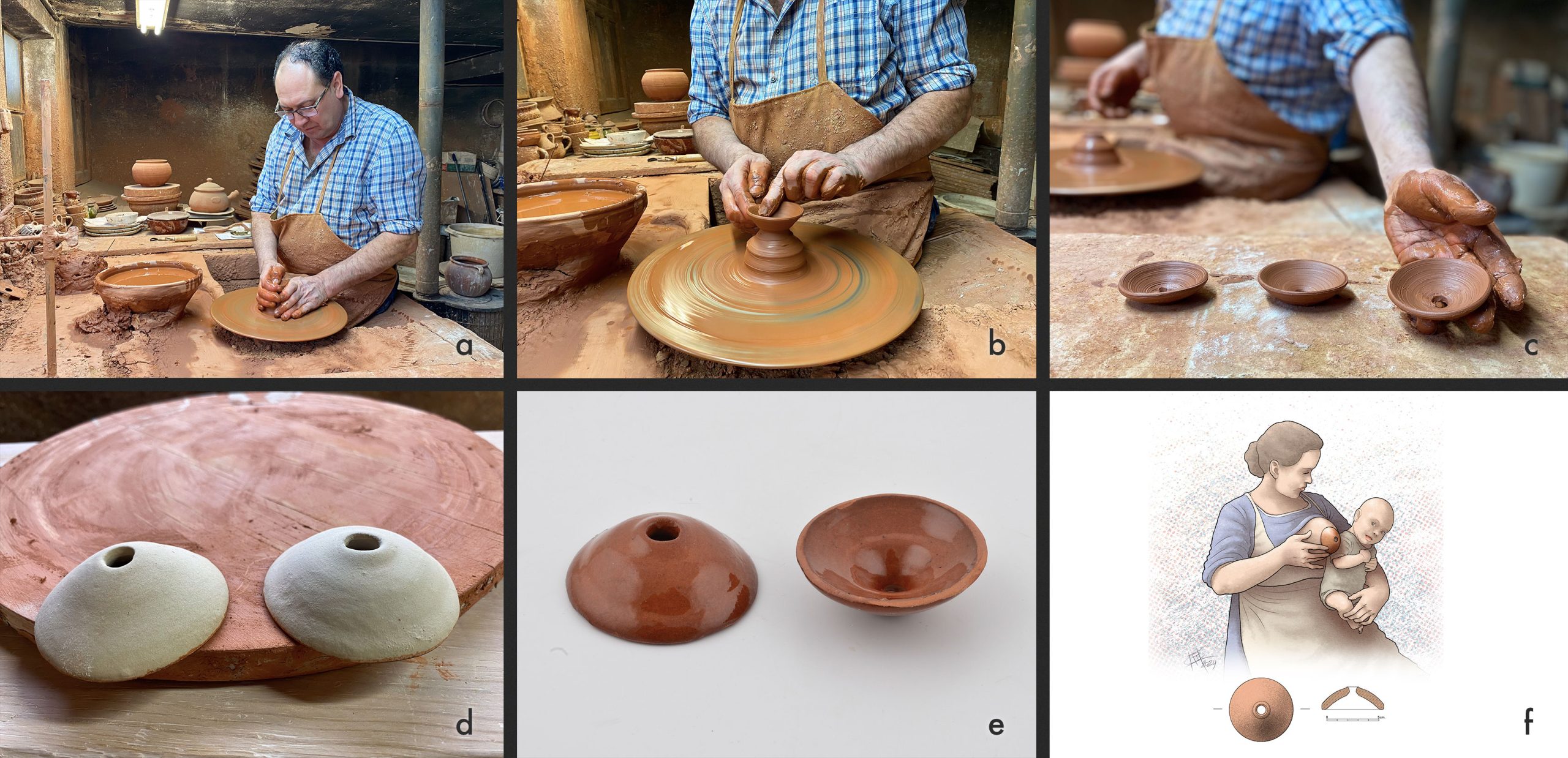Nipple Shields
II. From the Inclusa to Sotillo de la Adrada
The image shown here is of a conical clay object, about five centimetres in diameter at the base, and open at the tip. It is an imitation of an actual historical nipple shield included in his doctoral thesis Preindustrial Ceramics in the Province of Valladolid by Primitivo González, published in 1989 and based on field research from between 1972 and 1987. Here, he showed that this artifact had been in regular production during a considerable period in the province, where there had been sixteen centres of ceramics production until their decline in the mid-20th century.
The nipple shields pictured were fashioned using an electric potter’s wheel, a modernised version of the traditional tool. A lump of kneaded clay is opened up using the thumbs and then shaped from the inside and out by the hands and arms. It is left to dry slowly and then, after its first firing, the resulting “biscuit” is painted with enamel, and finally the piece is fired a second time, at the same temperature of 1,030ºC. The process takes a total of five days from start to finish.
This article is just one of a wide range of implements that were employed to assist with fertility, pregnancy and childbirth. These varied from delivery frames, breast pumps and feeding bottles to post-natal seated bathtubs, basins to wash newborns in and ewers for the bathing of the maternal perineum after delivery. Some of these items also appear in professor Elena Freire Paz’s doctoral thesis Recreating Traditional Ceramics in the Province of Lugo: Socio-Economic and Cultural Processes (2004).
The shields were used “to shape the nipples during nursing”, in other words to provide support when suckling was hampered by, for example, an excessively flat or inward-facing nipple. When the nipple’s lack of protuberance made it problematic for the child to engage effectively, its attempts to suckle would now create a vacuum which drew the nipple outwards, enabling the infant to connect and suckle successfully. With few exceptions, feeding at its mother’s breast was the only viable nourishment for a newborn, and if this failed the only substitute was another lactating female.
This artifact, employed in rural communities with access to only the most basic means of production, could not have been more modest or simple, yet judging from its effectiveness this in no way diminished its functional perfection. As well as making his living from making artisanal objects, the potter would put his skills to use in the service of his community. [M.ª Pilar Panero García.]

